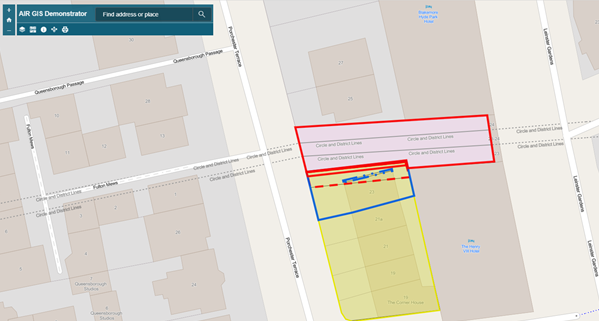Why a collapsed wall is indicative of the need for AIR
- Nathan Darroch

- Jul 4, 2020
- 3 min read
On 25th June 2020, a wall adjacent to the eastbound District line of London Underground, collapsed on to the railway, causing disruption to service for two days. Having looked at the video and photographs of the wall, it appears to be a party boundary wall between London Underground and neighbouring properties (Time 107.5, 25 June 2020; 26 June 2020).
The wall, also had a considerable number of cables and pipes attached to its railway side, which could have contributed to its collapse. It can also be seen that there are trees directly adjacent to the wall, along with other infrastructure (garden sheds, etc). However, this blog is not about whether the cables etc. should or should not have been attached to the wall, or what caused the wall to collapse and why.
What this blog is intended to consider is how the AIR research project could contribute to the effective management of the interfaces between the wall, the cables, the railway, and the neighbouring properties, employing evidence-based data.
Where the AIR research project is intended to assist comprehension of:
where something is present, someone must own it, and its safe continued operation and maintenance must be assured.
While there may be a presumption that the wall is owned and maintained by the railway company, there needs to be clearly documented evidence-based data clarifying why that is or should be the case. There are many and various reasons why the wall may actually be owned by the adjacent property owners, not least the Party Wall Act 1996.
This act not only defines the differences in types and natures of walls on property boundaries, but the ownership, rights, and responsibilities for those walls. E.g., those rights and responsibilities allow the railway company to place their cables on their side of the wall, but also require the railway company not to adversely affect the wall.
Were the cables placed on the wall, and was the wall maintained with any comprehension of the effects and affects of doing so, and how the presence, property, and protection interfaces would be affected in the short and long-terms?
The AIR processes include methods of analysis, validation, publication, and sharing of evidence-based data, relative to the interfaces of transport infrastructure and its environment. If the AIR processes and the generated evidence-based data, were employed within a railway organisation, the project team installing the cables, the asset managers inspecting the wall, and the adjacent property owners, who also have ownerships, rights, and responsibilities relative to the wall, would all have the ability to make effective asset management decision making in the short and long terms.
But what is the difference between AIR and normal data recording/asset management practice? A general civil engineering and asset management opinion of the maintenance of an asset is to look at the civil engineering inspection reports, which show interpretations of the physical nature of the asset inspected over time.
However, assets, infrastructure, and their interfaces with their environment are not just physical. They have multi-disciplinary legal, historical, geographical, asset management, civil engineering, structural engineering, transport and urban design, considerations. While it is common practice within industry to only consider the civil engineering factors, AIR combines those civil engineering factors with the other multi-disciplinary considerations.
Collectively these provide evidence-based data, which is essential to effective asset management, business decision making. Which subsequently enables the continued safe presence, operation, and maintenance of infrastructure, its interfaces, and its environment. This subsequently saves transport organisations time and money through effective sharing of knowledge and data.
If AIR was employed within a transport organisation, their collective teams could have direct access to evidence-based data, before they undertake their work, providing comprehension of:
What is the purpose and design of the wall;
Is the wall sufficient to have cables attached to it?
What are the ownerships, rights, and responsibilities for the wall;
Has it been maintained to a sufficient state to support the addition of the cables, in the short and long-terms;
Who needs to be consulted about the current and future maintenance of the wall;
How can the effective safe presence and operation of the wall, the cables, the railway, and the adjacent garden be assured through the effective management of the presence property and protection interfaces?
These would subsequently save the railway company, or its interfacing stakeholders, time and money on undertaking repair to failed infrastructure, because the interfaces of that infrastructure had been managed effectively, previously, thus mitigating risk of collapse.
See more about the aims and objectives of AIR on the research project pages.


















Comments